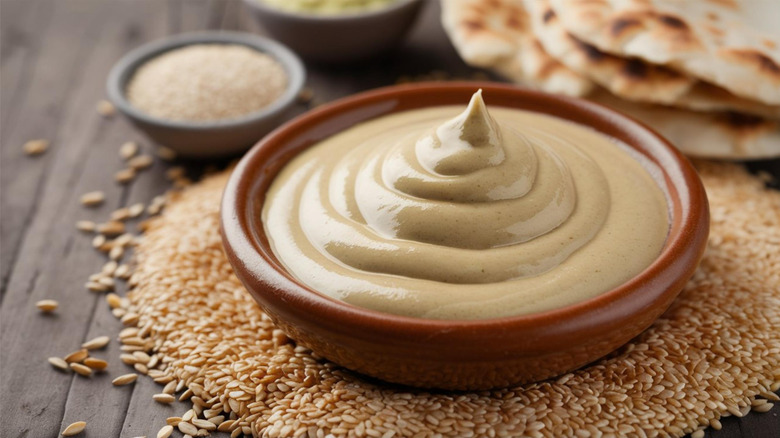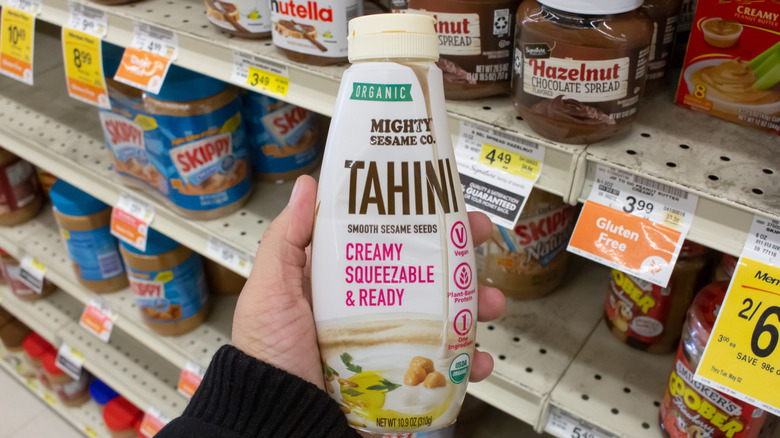Where Do You Find Tahini In The Grocery Store?
Once relatively unknown outside of Middle Eastern and Mediterranean cuisine, tahini's popularity has grown over the last decade. This can be attributed to the seed butter's versatility in many cooking styles, along with the desirability of its nutritional benefits (it's high in fiber, protein, vitamins, and minerals — especially copper). The tasty paste is naturally dairy-free, gluten-free, nut-free, and vegan.
Most people nowadays are familiar with it as a lemony-garlicky sauce eaten with falafel and shawarma or as an ingredient in hummus and baba ganoush. It's also what halva is made of, and which gives the sweet, fudgy confection its nutty flavor and soft, flakey texture. In fact, there are many sweet and savory ways to use tahini, but it's precisely because of its adaptability that where to find it in the grocery store can be tricky to pinpoint.
If your store has one, the first place to look for tahini is in the international foods section. Stores will often stock foods from various cultures together in one area ... Latino foods next to Asian foods, perhaps a European imports shelf, and most Middle Eastern foods all lumped together. Look for the Jewish or kosher items, as that's where you're likely to spot a jar of tahini. If it's not there, then the next place to check is the nut butter aisle. Tahini is more correctly sesame butter, but it's commonly kept near the peanut butter, jams, and spreads. When shopping at Walmart, for example, that's where you'll find it.
Look for tahini in the market's specialty sections
If you still haven't tracked it down, try hunting for tahini in the condiments aisle. While it's not typically used the same as ketchup, mustard, or mayo, you might find it shelved nearby. After all, tahini can be used as is (though newcomers to the paste might find it a bit bitter in this form) or made into all kinds of creamy sauces. Likewise, you might also want to check for it by the marinades or salad dressings.
A couple more sections of the grocery store you can search are the deli or prepared foods section where hummus is often kept, or in the refrigerated natural foods zone where tofu, plant-based foods, and miso paste usually live — although tahini doesn't always need to be refrigerated. When all else fails, ask the store staff to point you in the right direction.
Should it turn out that your local grocery store doesn't stock tahini, your best bet is to seek out the local ethnic markets. You're guaranteed to score some at just about any Middle Eastern market, and probably Mediterranean retailers as well. Look for shops that specialize in Israeli, Arabic, Turkish, Armenian, or Greek foods, and you're bound to come across a selection of tahini. Another option is your local "health food" store or co-op that carries natural, organic, or bulk ingredients. Despite it being sometimes difficult to locate, tahini is one splurge-worth grocery store item you should try at least once.


